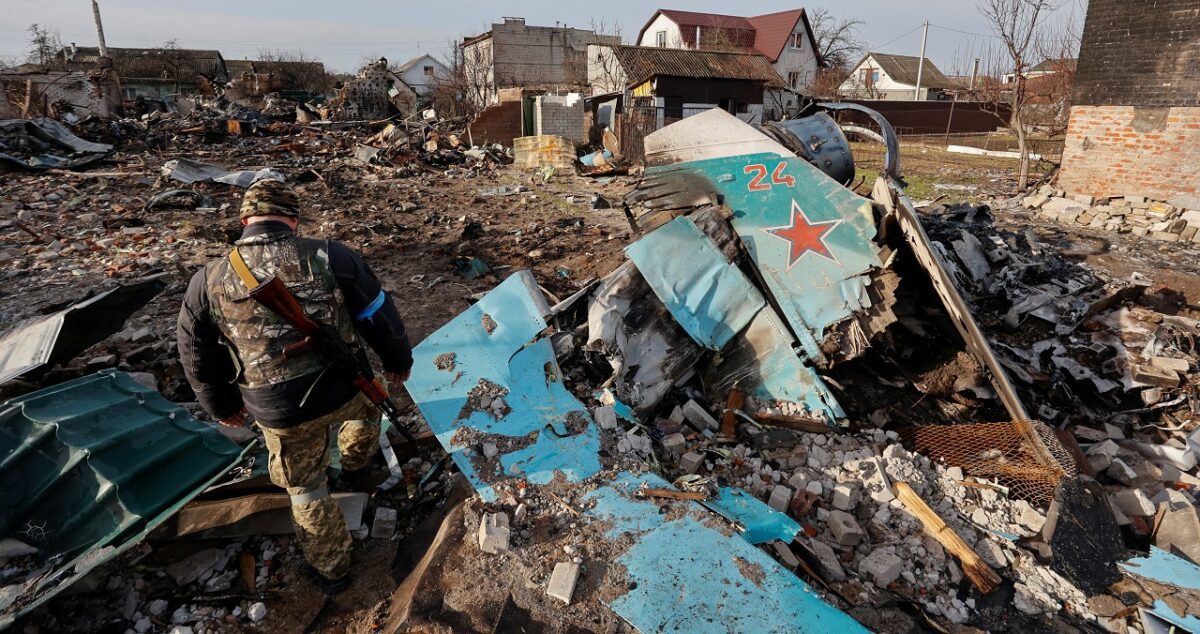On October 18, 2022, a Russian Su-34 fighter aircraft crashed in the Russian city of Yeysk. The RuMoD attributes the crash to an engine fire shortly after take-off.
An investigation will determine the sequence of events that led to the tragic crash that killed 13 people, including three children.
The fighter was most likely operating from Yeysk airport, which hosts a mix of military-civilian infrastructure. The base reportedly houses elements of the Russian Naval Aviation, including a training center.
Our analysis in the following paragraphs aim to let you resolve any controversy about the reason for the crash with your thought process. They are not aimed at telling you what happened. We really don’t know.
A video of the crash of a Russian SU-34 fighter-bomber in Yeysk, Krasnodar Territory, appeared. pic.twitter.com/GXnYo3zDyl
— NOELREPORTS 🇪🇺 🇺🇦 (@NOELreports) October 17, 2022
The moment of the Su – 34 crash in #Eisk #Ейск #Russia #Россия#RussiaUkraineWar #News #Новости pic.twitter.com/Ca6IGMoZ7z
— ⚠️ TOP NEWS (@Vova151974) October 17, 2022
The Crash Video Analysis
Let’s start with the video.
It initially shows a Su-34 in a shallow descent without trailing smoke or fire. Then suddenly, there is an explosion in the rear and mid-section of the aircraft. Shortly thereafter, you see the flash of ejection seat rocket motors as they extract the pilot(s) from the stricken aircraft.
Now, an aircraft that has just taken off would be in a steep climb, not a gentle descent, as is the aircraft in the video. So the accident didn’t happen immediately on take-off. The aircraft’s flight path suggests that the pilots were aware of the engine fire and were attempting to recover to Yeysk.
Engine fires usually occur when fuel leaks over the metal casing of a very hot engine. The chances that an engine will explode as soon as the fuel leak starts are bleak but cannot be ruled out.
Had that happened, the aircraft would have been in a steep climb immediately before the pilots abandoned the aircraft, oblivious to the impending disaster. The video shows otherwise.

Assuming a gradual fuel leak, there would almost certainly be a warning to the pilot – usually visual and audio engine fire warning alerts. The warning would prompt the captain to switch off the errant engine, and if that doesn’t fix the problem, activate the engine fire extinguisher and start heading home on a single engine in the hope that the fire is extinguished.
The video flight path seems to suggest such a sequence of events.
The explosion in the video could still occur if switching off the engine and using the fire extinguisher doesn’t extinguish the fire.
The fact that the pilots let the aircraft fly towards an apartment complex would suggest that the explosion caught them completely off guard, or they aimed the aircraft towards the clear ground but following their ejection, the aircraft drifted off course.
Could It Be A Fratricidal AD Missile Kill
A fratricidal AD missile kill is theoretically possible, but there is no evidence. There is no missile trail. The explosion occurred around the rear & mid-sections, suggesting it was internal.
But a stricken fighter aircraft’s unexpected return to base during wartime could trigger a fratricidal fire.
- Reach out to us at etdesk (at) eurasiantimes.com
- Follow EurAsian Times on Google News